Over the past decade, domestic steel industry has grown at CAGR of 7 percent against global average of 3 percent with China growing by 6 percent.

In line with domestic steel consumption, capacity has shown remarkable addition.
Despite net capacity addition, utilization of domestic industry has hovered around 8285 percent which is considerably higher than the global average of 72-75 percent in the last few years.
However, India has turned into a net importer of steel during FY19 while import growth has remained constant while exports declined by more than 30 percent.
Outlook
Indian steel industry is much more favourably placed than other countries.
Despite the hindrances, we expect that Indian steel demand to grow by a modest pace of 5.5 percent in the next two years.
We expect steel capacity addition of 12 mt in the next 2-3 years consisting of largely the brownfield capex of large steel players while no capacity addition is envisaged by the secondary players.
We also expect incremental demand of 18-20 mt.
So, despite increasing utilization levels, the country is likely to actually move into a net importer phase.
Capacity utilization of the domestic steel sector is likely to be around 80-90 percent in the next two-three years.
In the last decade, despite falling margins and demand growth, global steel has continued to add on to capacity.
These capacities are coming up in India, China and other Asian economies.
While there are also shutdown in capacities, the net addition in capacity continued till CY15.
“We believe the current over capacity situation in global steel industry has reached 450 million tons which would be around 20 percent of the existing capacity if we are considering 100 percent operating rate,” an official of the rating agency said.
However, if we are assuming operating rate of 80%, overcapacity situation falls down to around 100 million tons or 5 percent of existing capacity.”
この記事は Steel Insights の July 2019 版に掲載されています。
7 日間の Magzter GOLD 無料トライアルを開始して、何千もの厳選されたプレミアム ストーリー、9,000 以上の雑誌や新聞にアクセスしてください。
すでに購読者です ? サインイン
この記事は Steel Insights の July 2019 版に掲載されています。
7 日間の Magzter GOLD 無料トライアルを開始して、何千もの厳選されたプレミアム ストーリー、9,000 以上の雑誌や新聞にアクセスしてください。
すでに購読者です? サインイン

Steel's Net Zero mission
The country’s commitment to achieving Net Zero within a targeted timeframe will now propel its steel sector towards a sustainable future in line with global trends.
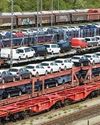
Fuel Price Hike, Supply Chain Disruption Hurt Festive Sales
Supply chain disruptions and fuel price hikes have hurt festive sales in a big way as most auto majors posted decline in sales in October.

Seaborne coking coal offers remain range-bound
Seaborne coking coal offers moved in a narrow range in October amid global supply tightness and healthy spot demand.

Global crude steel output down 8% in September
China manufactured 74 mt in September, fall of 21% y-o-y while India’s production went up by 7% to 10 mt.
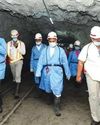
MOIL embarks on expansion projects
“Even though our country is blessed with manganese ore reserves, we import 50% of the domestic requirement. We have to lower our import dependence and save precious foreign exchange.” Ram Chandra Prasad Singh, Steel Minister

Iron ore handled by major ports down 17% in H1
The 12 major Indian ports handled 27 mt of iron-ore during H1 of 2021, down by 17% from 33 mt recorded for the corresponding period of previous year.
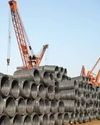
Shrinking China output to boost India exports
“In the third quarter of 2021, the company actively responded to the pressure from external policies, such as production curtailment and dual control system on energy consumption and intensity, as well as coal resource shortage and surging prices.” Baoshan Iron and Steel Co Ltd
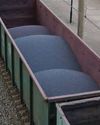
Indian Railways' iron-ore handling up 25% in H1
Indian Railways in April-September of 2021 (H1) transported 84 mt of iron ore, up by 25% over 67 mt during April-September 2020.
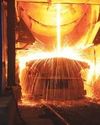
September crude steel production up 7.2% y-o-y
India’s crude steel production in September 2021 grew 7.2 percent to 9.547 million tons (mt) over September 2020 but was down by 3.2 percent from August 2021 output, provisional steel ministry data showed.

“Five enablers: way forward to sustainable cleaner steel”
Right and scalable technology, appropriate policy guidance by government, access to finance to fund transition, willingness of customers to pay for cleaner products and infrastructure for use of new technologies are the need of the hour for the sustainable and cleaner steel industry, according to Madhulika Sharma, Chief Corporate Sustainability, Tata Steel.